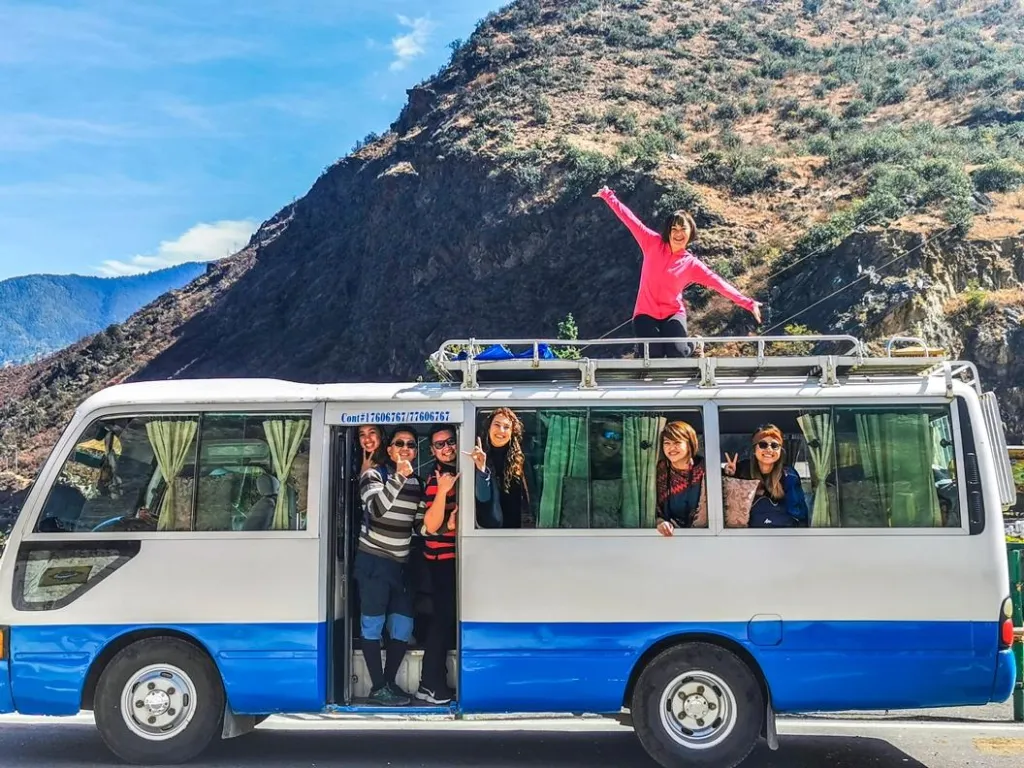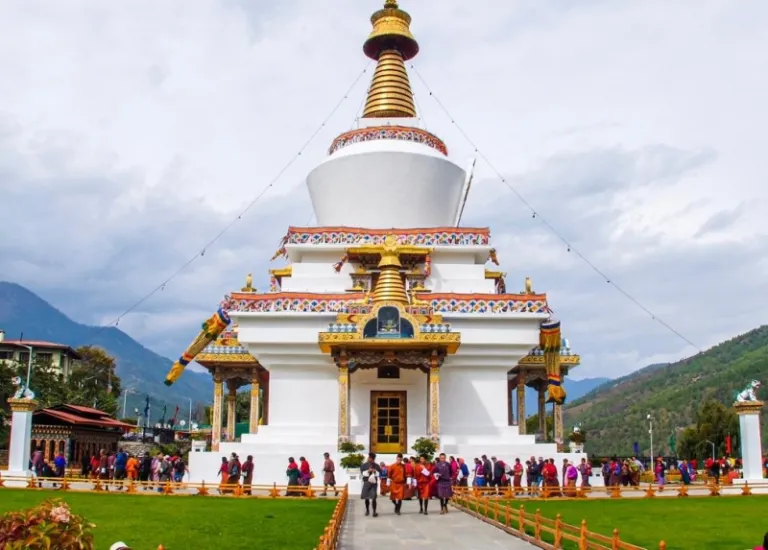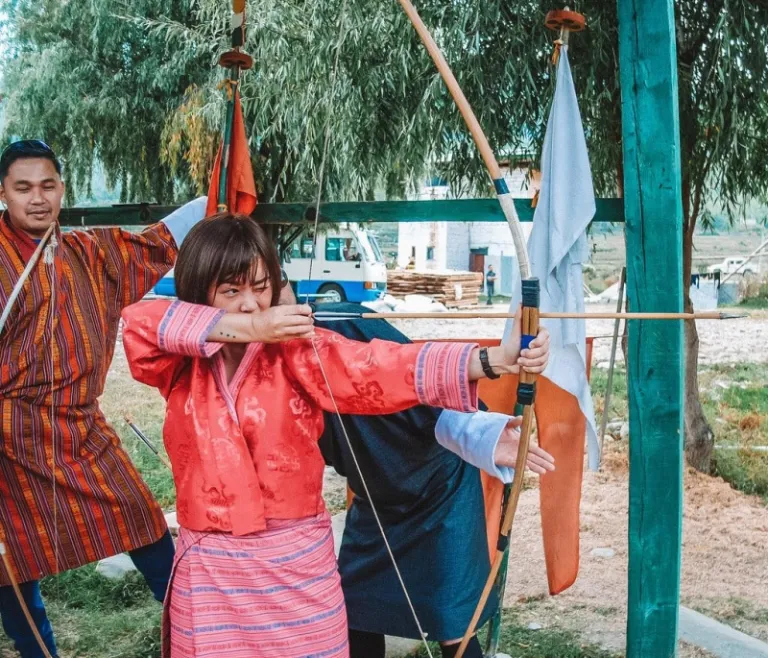Los Angeles is more than Hollywood stars. From hikes with killer views to beaches straight out of a rom-com, here are 10 must-do LA experiences for Filipino travellers or any wanderers in general!
Travelling in Bhutan: 5 Must-Experience Senses and Activities

Contributed by Jmademoiselle
Let me be straightforward, visiting the Land of the Thunder Dragon will cost you more compared to conventional tourist destinations.The Bhutan government requires foreign visitors, except citizens of India, Bangladesh, and Maldives, to book with accredited agencies for a standard daily package that covers accommodation, meals, entry visa, tour guide, and entrance fees. This policy ensures a quality travel experience while protecting Bhutan’s culture and environment. The rationale is to control the volume of tourists in order to safeguard their culture and environment. At the same time, it will encourage quality experience over quantity.
Airfare can take up a significant portion of your travel budget, as only two airlines, Drukair and Bhutan Airlines, operate flights to Paro International Airport, Bhutan’s only international airport. Nevertheless, just when I saw the vast mountain range surrounding Paro International Airport, I was sure it will be all worth the price.
Also read: Our Ultimate Barkada Trip: Fun Snapshots From the Himalayas
Breath of fresh air

Bhutan’s internationally acclaimed clean air is evident once you step outside the aircraft. It is because there are more flora and fauna than skyscrapers, vehicles, and industries in the country. The government invests in agriculture and hydroelectricity to fulfil its free health care and education for all while keeping its commitment to Mother Earth. In addition, the country is lauded for its prohibition on the sale of tobacco and smoking in public places.
Except for dinosaurs and mysterious creatures, it was more like “The Land Before Time”. The scenery felt untouched and pristine, like stepping into a land where nature still reigns supreme, far from the usual man-made pollutants of bustling cities. Despite its carbon-negative efforts, Bhutan is not immune to the effects of climate change, which impact even the most environmentally conscious nations.
Sound of peace

Vehicles are scarce in Bhutan. Even the nation’s roads are narrow, which explains why they do not have traffic lights. I only saw uniformed officers directing the movement in tiny roundabouts. As a matter of fact, I haven’t seen a single motorcycle during our trip.
Our guide “Kin Zang” warned us beforehand that loud noises are considered a taboo for the Bhutanese people. Sound pollution is a stranger in their culture, while the voice of quietness and music of nature are familiar to them. It explains why sustainability and environmental protection are serious matters in the country amidst the industrial revolution happening around the globe. That alone is already worth the praise.
Sight of beautiful landscapes

Then we finally saw the majestic Paro Taktsang, commonly known as “The Tiger’s Nest Monastery”, sitting quietly at the cliff of the soaring mountains in Paro. It is a sacred site built in 1962, around a cave where an eminent Buddhist Master is believed to have meditated in the 8th century. The hike was the highlight of our trip and it took us around three to four hours to reach this Shangri-La. Albeit, Kin Zang proudly mentioned that he can do it for just an hour. By the way, kudos to him for his warmth and hospitality which made our journey more personal and unforgettable!
The trail has picturesque views that somewhat appear to be large paintings of foliage, infinite canopies, clear azure skies, and snow-capped mountains; a hiatus from urban lights and landscapes. Strings of colourful banners called prayer flags were tied on the trees that added vibrancy to nature, imparted resiliency during difficult times, and provided hope to its believers.
Enlightening words of Buddhism

Majority of the Bhutanese people are Mahayana Buddhists, I have seen a lot of them holding prayer wheels. In fact, the country recognises a spiritual leader, also called “Je Khenpo”, aside from the King of Bhutan. He is a seasoned monk that has particular duties and power. The Bhutanese have high regard for Buddhism to the extent of including their spirituality in the country’s decision-making, contrary to most of the developed countries where religion is void in political issues.
Touch of humility
 Archery while wearing the national costume, along with legitimate hot stone bath with medicinal leaves and enormous chilis eaten raw or mixed in almost every Bhutanese dish, is just one of the remarkable things in the country.
Archery while wearing the national costume, along with legitimate hot stone bath with medicinal leaves and enormous chilis eaten raw or mixed in almost every Bhutanese dish, is just one of the remarkable things in the country.
Moreover, it was heartwarming when I learned that the Royal King and his family choose to live in a modest and small house beside the palace. He disregarded the comfort and luxury, just to be a good leader and epitome of humility for the Bhutanese people who look up to him. An actual reflection of how Bhutan — as a country, despite being rich in culture and natural resources — opt to live in simplicity.
Also read: A One-Week Itinerary for Exploring Nepal and Bhutan
Nonetheless, we have experienced the magnificence of Bhutan with our five senses: s breath of fresh air, sights of beautiful landscapes, sounds of peace, enlightening words of Buddhism, and touches of humility from the Bhutanese. A perfect illustration of the country’s well-known “Gross National Happiness” that focuses on the holistic well-being of the people. It resonates not only to its citizens but also to the visitors who leave the country with gratitude and contentment.
Published at
About Author
Jessa Mae Pioquinto
Subscribe our Newsletter
Get our weekly tips and travel news!
Recommended Articles
10 Best Things to Do in Los Angeles 10 Commandments for Responsible Travel Flexing Spread the good word!
10 Cutest Cafes in Japan That Are Totally One of a Kind From Pikachu snacks to Totoro cream puffs, here are 10 themed cafes in Japan that prove café hopping should be part of your travel itinerary.
10-day Christmas and New Year Japan Trip: Complete Travel Itinerary Celebrate Christmas and New Year in Japan with this 10-day holiday vacation itinerary packed with Tokyo lights, Kyoto charm, and Osaka adventures.
10 Fairytale Castles In Europe Filipinos Need To See! Permission to feel like royalty even for a day?!
Latest Articles
Pangasinan Town Now Accepts Digital Payments in Markets and Transport No cash? No problem. Alcala, Pangasinan is officially in its digital era.
Pop Mart PH Opens Permanent Flagship Store in SM Megamall Labubu and Hirono have arrived! Check out holiday hours and event recaps here!
Chen of EXO Arcadia Concert Manila 2026: Tickets, Dates, and Perks Ticket info and fan perks
TLC Playpark: Free Christmas Destination in Taguig, Opening Hours, and Commute Guide Learn what to expect and how to get to TLC Playpark in Brgy. Lower Bicutan Taguig via C5 and MRT-3!
Free MRT and LRT Rides for LGBTQIA+ Members and Solo Parents Today Who rides free today

